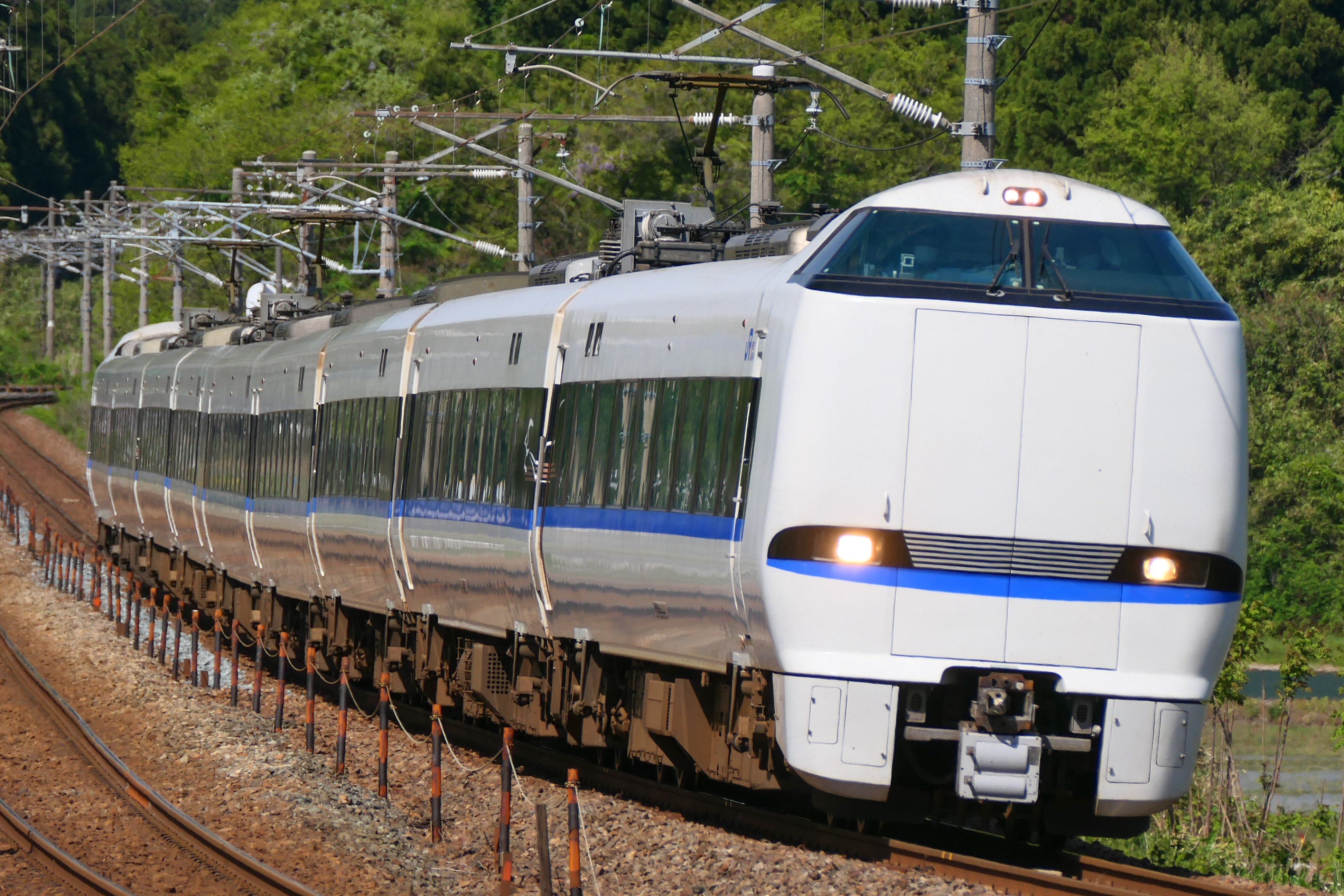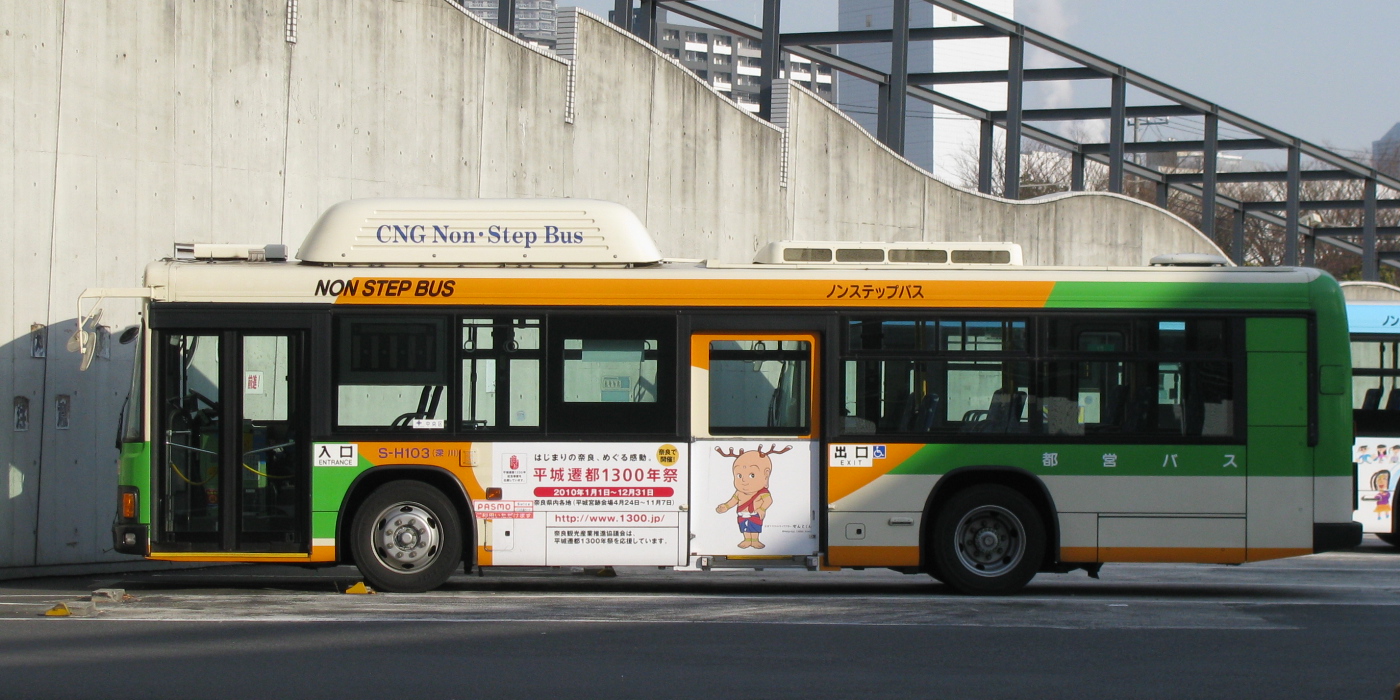|
Mahoroba (train)
The is a limited express train service in Japan owned by JR West connecting Ōsaka Station and Nara Station that started operation in November 2019. It runs on the Osaka Higashi Line and Yamatoji Line on weekends and holidays and was initially a seasonal train, before beginning year-round operation in March 2025. The name ''Mahoroba'' was previously used from April to June 2010 for a special limited express service between Shin-Ōsaka Station and Nara Station that ran on Tōkaidō Main Line, Tokaido Main Line (Umeda Freight Line), Osaka Loop Line, and Kansai Main Line (Yamatoji Line) from April to June 2010. 2010 operation overview From April 1 to June 30, 2010, a "Nara Destination Campaign" was held to attract more tourists to Nara. It also marked the 1,300th anniversary of the transfer of the capital to Heijo-kyo, and the 1,300th Anniversary Commemorative Project of Heijo-kyo was held centering on the ruins of Heijo Palace in Nara City. Six Japan Railways Group, JR compan ... [...More Info...] [...Related Items...] OR: [Wikipedia] [Google] [Baidu] |
Limited Express
A limited express is a type of express train or express bus service that stops at fewer locations compared to other express services on the same or similar routes. Japan The term "limited express" is a common translation of the Japanese compound noun ; ; often abbreviated as , though some operators translate the word differently. There are two types of limited express trains: inter-city rail, intercity, and commuter rail, commuter. The former type of limited express trains generally use long-distance coaches, equipped better than other ordinary express trains, including reserved seating, dining cars, food and beverage cars, and "green cars" (first class cars). The latter type of limited express train usually incurs no surcharge, but seating is usually first-come, first-served, since this type of train uses commuter train coaches. Both types of trains travel faster and stop at fewer stations. Until 1972, the ''Hikari (train), Hikari'' on the Tōkaidō Shinkansen was offic ... [...More Info...] [...Related Items...] OR: [Wikipedia] [Google] [Baidu] |
Railway Services Introduced In 2010
Rail transport (also known as train transport) is a means of transport using wheeled vehicles running in tracks, which usually consist of two parallel steel rails. Rail transport is one of the two primary means of land transport, next to road transport. It is used for about 8% of passenger and freight transport globally, thanks to its energy efficiency and potentially high speed.Rolling stock on rails generally encounters lower frictional resistance than rubber-tyred road vehicles, allowing rail cars to be coupled into longer trains. Power is usually provided by diesel or electric locomotives. While railway transport is capital-intensive and less flexible than road transport, it can carry heavy loads of passengers and cargo with greater energy efficiency and safety. Precursors of railways driven by human or animal power have existed since antiquity, but modern rail transport began with the invention of the steam locomotive in the United Kingdom at the beginning of the 19t ... [...More Info...] [...Related Items...] OR: [Wikipedia] [Google] [Baidu] |
Named Passenger Trains Of Japan
Named may refer to something that has been given a name. Named may also refer to: * named (computing), a widely used DNS server * Naming (parliamentary procedure) * The Named (band), an American industrial metal group In literature: * ''The Named'', a fantasy novel by Marianne Curley * The Named, a fictional race of prehistoric big cats, depicted in ''The Books of the Named'' series by Clare Bell See also * Name (other) * Names (other) Names are words or terms used for identification. Names may also refer to: * ''Names'' (EP), by Johnny Foreigner * ''Names'' (journal), an academic journal of onomastics * The Names (band), a Belgian post-punk band * ''The Names'' (novel), b ... * Naming (other) {{disambiguation ... [...More Info...] [...Related Items...] OR: [Wikipedia] [Google] [Baidu] |
West Japan Railway Company
, also referred to as , is one of the Japan Railways Group (JR Group) companies and operates in western Honshu. It has its headquarters in Kita-ku, Osaka. It is listed in the Tokyo Stock Exchange, is a constituent of the TOPIX Large70 index, and is also one of only three Japan Railways Group constituents of the Nikkei 225 index: the others are JR East and JR Central. It was also listed in the Nagoya and Fukuoka stock exchanges until late 2020. Lines Shinkansen * Hokuriku Shinkansen ( - ) * San'yō Shinkansen * Hakata Minami Line :: Officially not a Shinkansen JR-West's highest-grossing line is the Sanyo Shinkansen high-speed rail line between Osaka and Fukuoka. The Sanyo Shinkansen alone accounts for about 40% of JR-West's passenger revenues. The company also operates Hakata Minami Line, a short commuter line with Shinkansen trains in Fukuoka. Urban Network The "Urban Network" is JR-West's name for its commuter rail lines in the Osaka-Kobe-Kyoto metropolitan are ... [...More Info...] [...Related Items...] OR: [Wikipedia] [Google] [Baidu] |
List Of Named Passenger Trains Of Japan
This article contains lists of Lists of named passenger trains, named passenger trains in Japan. Shinkansen (bullet trains) Daytime trains Limited express (partial list) Express Rapid Night trains Limited express Express Rapid See also * Rail transport in Japan References * JR Timetable, December 2008 * * {{reflist Named passenger trains of Japan, List of named passenger trains of Japan Lists of named passenger trains, Japan Japanese railway-related lists, Named passenger trains ... [...More Info...] [...Related Items...] OR: [Wikipedia] [Google] [Baidu] |
Rakuraku Yamato
The is a Commuter Limited Express train operated by West Japan Railway Company (JR West) between and via the Yamatoji and Osaka Loop lines. This service started operation on 18 March 2024 as a weekday rush hour service as part of the March 2024 timetable revision to improve passenger comfort on the Yamatoji Line. History * 15 December 2023 - Service officially announced by JR West that it will start operation in March 2024, along with stations served and operation frequency * 30 January 2024 - Rolling stock for this service announced to be the 287 series * 18 March 2024 - Start of operation with departure ceremony at Nara Station Service pattern At the time of its introduction, the Rakuraku Yamato service only operates on Weekdays. One westbound service from Nara to Shin-Osaka is operated during morning rush hours and one eastbound service from Shin-Osaka to Nara is operated during evening rush hours. Rakuraku Yamato trains serve the following stations: - - - - ... [...More Info...] [...Related Items...] OR: [Wikipedia] [Google] [Baidu] |
San'yō Shinkansen
The is a line of the Japanese Shinkansen high-speed rail network, connecting Shin-Osaka in Osaka with Hakata Station in Fukuoka, the two largest cities in western Japan. Operated by the West Japan Railway Company (JR West), it is a westward continuation of the Tōkaidō Shinkansen and also serves other major cities in between on Honshu and Kyushu islands such as Kobe, Himeji, Okayama, Hiroshima, and Kitakyushu, through the Shin-Kanmon Tunnel. The Kyushu Shinkansen continues south of Hakata to Kagoshima. The San'yō Shinkansen connects Hakata with Osaka in two and a half hours, with trains operating at a maximum speed of for most of the journey. Some '' Nozomi'' trains operate continuously on San'yō and Tōkaidō Shinkansen lines, connecting Tokyo and Hakata in five hours. Rolling stock As of March 2020, the following types are used on San'yō Shinkansen services. * 500 series (8-Car V Set): '' Hikari'' / '' Kodama'' services * 700–7000 series: '' Hikari'' / '' Kodama'' ... [...More Info...] [...Related Items...] OR: [Wikipedia] [Google] [Baidu] |
Nara Line (Kintetsu)
The is a Japanese railway line owned by the Kintetsu Railway. The line connects Fuse Station in the eastern suburbs of Osaka to Kintetsu Nara Station in the historic city of Nara, though operationally, the line begins at Ōsaka Namba Station on the Namba Line. Additionally, some trains run through-services starting at Kobe Sannomiya Station on the Hanshin Railway Main Line in Kobe. Eastern satellite cities such as Higashiosaka and Ikoma are connected by the line. This line is more direct than the JR line between Osaka and Nara. History The line was opened by in 1914, dual track and electrified at 600 VDC. Whereas the JR West Yamatoji Line routes south of the Ikoma mountain range to connect Osaka and Nara, the Kintetsu Nara Line uses a tunnel through the Ikoma mountain range. As a result, the Kintetsu route is more direct and has allowed municipalities along the line such as Ikoma to flourish as major commuter hubs. To respond to high demand, the railway operates se ... [...More Info...] [...Related Items...] OR: [Wikipedia] [Google] [Baidu] |
683 Series
The is a dual-voltage electric multiple unit (EMU) train type operated by West Japan Railway Company (JR-West) on limited express services in Japan since 2001. Variants 683-0 series The first subseries consists of 54 cars composed of 6 6-car trains (W31–W36) and 6 3-car trains (V31–V36) built in 2001–2002. 683-2000 series 87 cars were built in 3-car and 5-car sets. This subseries was subsequently transferred to the 289 series with their AC equipment removed. The move was made after the opening of the Hokuriku Shinkansen and the associated discontinuation of service by these sets on the Hokuhoku Line. 683-4000 series 108 cars were built in 9-car sets for a total of 12 trainsets. File:JR West 683 series EMU 421.JPG, 683-4000 series 683-8000 series This is the designation given to a 6-car train (N03) and a 3-car train (N13) formerly owned by Hokuetsu Express for services on the ''Hakutaka'' limited express. At the opening of the Hokuriku Shinkansen in March 2015, ... [...More Info...] [...Related Items...] OR: [Wikipedia] [Google] [Baidu] |
Sento-kun
is a yuru-chara mascot created by Nara, Nara, Nara City Office to commemorate the 1300th anniversary of Nara Heijō-kyō, the ancient capital of Japan, in 2010. The city of Nara has a long tradition of adopting guardian deities such as Nio (Buddhism), Nio (a pair of temple guardians), Asura, Jūni Shinshō (Twelve Heavenly Generals) and Four Heavenly Kings, Shitenno (Four Guardian Kings). The new mascot was chosen by the city office to inherit their mission, and as a "personification of the energy" of the ancient capital dotted with temples, gardens and shrines. Sento-kun is meant to resemble an amiable young boy who has the antlers of a deer, an animal which has long been regarded as a heavenly protector of the city. Character design The character was designed by Satoshi Yabuuchi, a sculptor and professor at Tokyo University of the Arts, who was one of twelve guest designers invited by the Association for Commemorative Events of the 1300th Anniversary of the Nara-Heijyokyo Ca ... [...More Info...] [...Related Items...] OR: [Wikipedia] [Google] [Baidu] |
Osaka Station
is a designated city in the Kansai region of Honshu in Japan. It is the capital of and most populous city in Osaka Prefecture, and the third-most populous city in Japan, following the special wards of Tokyo and Yokohama. With a population of 2.7 million in the 2020 census, it is also the largest component of the Keihanshin Metropolitan Area, which is the second-largest metropolitan area in Japan and the 10th- largest urban area in the world with more than 19 million inhabitants. Ōsaka was traditionally considered Japan's economic hub. By the Kofun period (300–538) it had developed into an important regional port, and in the 7th and 8th centuries, it served briefly as the imperial capital. Osaka continued to flourish during the Edo period (1603–1867) and became known as a center of Japanese culture. Following the Meiji Restoration, Osaka greatly expanded in size and underwent rapid industrialization. In 1889, Osaka was officially established as a municipality. The con ... [...More Info...] [...Related Items...] OR: [Wikipedia] [Google] [Baidu] |



